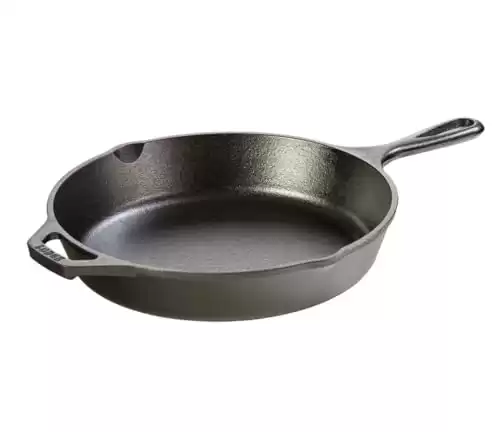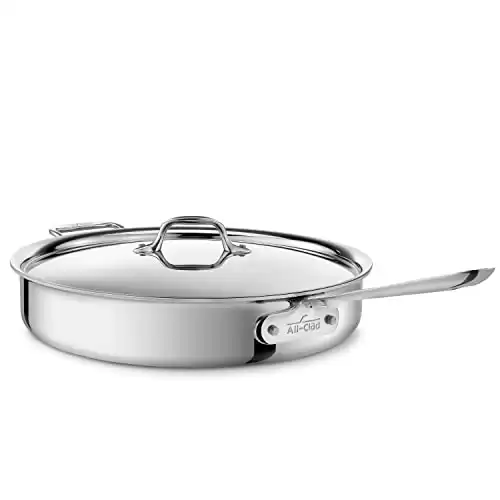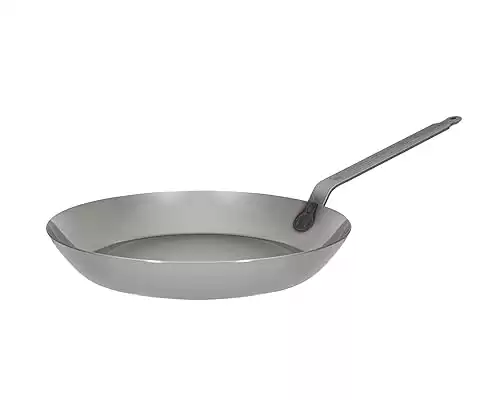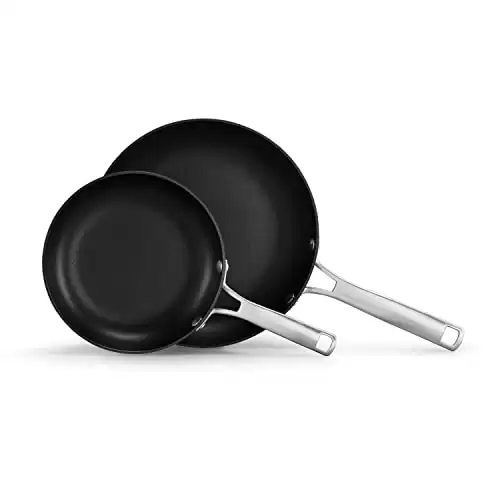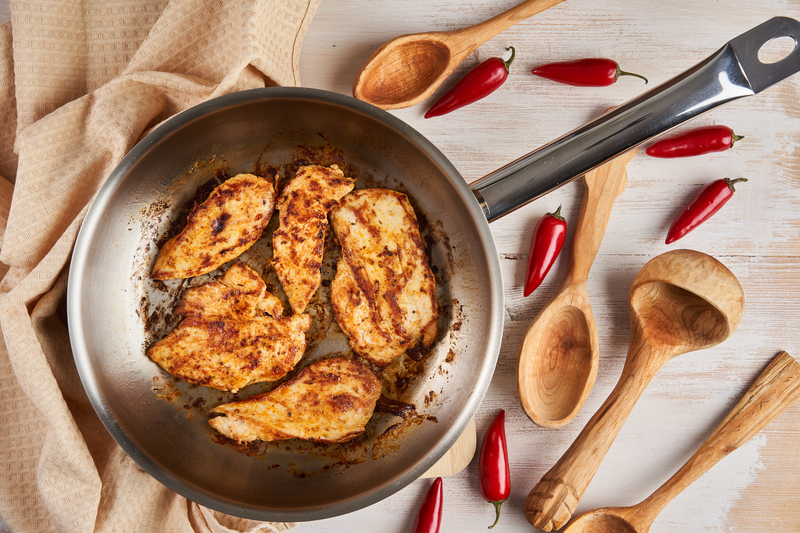 Pans are an essential tool in every kitchen.
Pans are an essential tool in every kitchen.
They are used to cook almost every meal, from breakfast to dinner.
However, with so many types of pans available, it can be challenging to choose the right one.
One of the most important factors to consider when selecting a pan is durability.
No one wants to invest in a pan that will wear out quickly and need to be replaced frequently.
Therefore, it is essential to know which type of pan is the most durable.
The durability of a pan depends on several factors, including the material it is made of, the thickness of the metal, and the way it is constructed.
Some common materials used to make pans include stainless steel, cast iron, aluminum, and copper.
Each material has its own unique properties, which affect its durability.
Additionally, the thickness of the metal used to make the pan is also an important factor.
A thicker pan is generally more durable than a thinner one.
Finally, the way a pan is constructed can also impact its durability.
Pans that are made with multiple layers of metal tend to be more durable than those made with a single layer.
Durable Pans That Will Last
|
Our Rating:
4.5
|
Our Rating:
4.5
|
Our Rating:
4.5
|
Our Rating:
4.5
|
|
$16.99
|
N/A
|
$115.41
|
$67.00
|
|
Description: This skillet is built to last, with a rugged design that ensures durability for decades of use. Its pre-seasoned surface offers exceptional non-stick performance that improves over time, making it stronger with every use. |
Description: Features a robust 3-ply bonded construction, ensuring long-lasting strength and even heat distribution. Designed for durability, it withstands temperatures up to 600°F and performs flawlessly on all cooktops, including induction. |
Description: Made from heavy-duty black carbon steel, this pan offers superior durability and resistance to warping over time. Its natural non-stick surface develops and strengthens with use, making it a lasting investment for any kitchen. |
Description: Built with hard-anodized aluminum, these frying pans are exceptionally strong and resist scratches and warping for years of dependable use. The durable nonstick coating ensures easy food release and is tough enough to withstand frequent cooking and cleaning. |
This skillet is built to last, with a rugged design that ensures durability for decades of use.
Its pre-seasoned surface offers exceptional non-stick performance that improves over time, making it stronger with every use.
Features a robust 3-ply bonded construction, ensuring long-lasting strength and even heat distribution.
Designed for durability, it withstands temperatures up to 600°F and performs flawlessly on all cooktops, including induction.
Made from heavy-duty black carbon steel, this pan offers superior durability and resistance to warping over time.
Its natural non-stick surface develops and strengthens with use, making it a lasting investment for any kitchen.
Built with hard-anodized aluminum, these frying pans are exceptionally strong and resist scratches and warping for years of dependable use.
The durable nonstick coating ensures easy food release and is tough enough to withstand frequent cooking and cleaning.
Factors Influencing Pan Durability
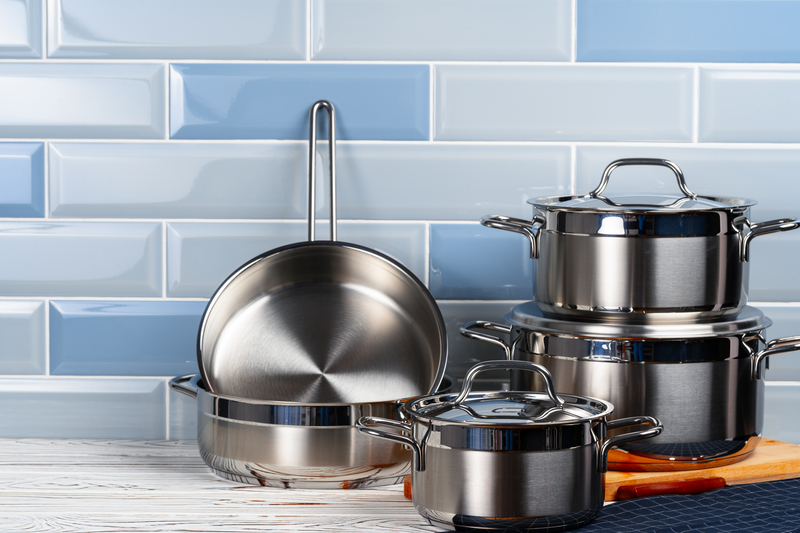
Material Composition
The type of material used to make a pan is one of the most critical factors that influence its durability.
Pans made from high-quality materials such as stainless steel, cast iron, and hard-anodized aluminum are known to be more durable than those made from low-quality materials such as low-grade aluminum or thin steel.
Stainless steel pans are particularly durable and can last for years if well-maintained.
Thickness and Construction
The thickness of a pan’s base and walls also plays a significant role in determining its durability.
A thicker base and walls provide better heat distribution and prevent warping, which can cause a pan to lose its shape and become less durable over time.
Pans with multiple layers of metal, such as tri-ply or five-ply construction, are also more durable than those with a single layer of metal.
Coating and Surface Treatment
The coating and surface treatment of a pan can also affect its durability.
Non-stick coatings, for example, can wear off over time, reducing a pan’s lifespan.
Ceramic coatings are more durable than traditional non-stick coatings, but they can still chip or scratch if not handled properly.
Pans with a hard-anodized surface treatment are highly durable and resistant to scratches and other forms of wear and tear.
In summary, the durability of a pan depends on several factors, including the material composition, thickness and construction, and coating and surface treatment.
By choosing a pan made from high-quality materials and with a thick base and walls, and a durable coating or surface treatment, one can ensure that their pan will last for years to come.
Types of Durable Pans
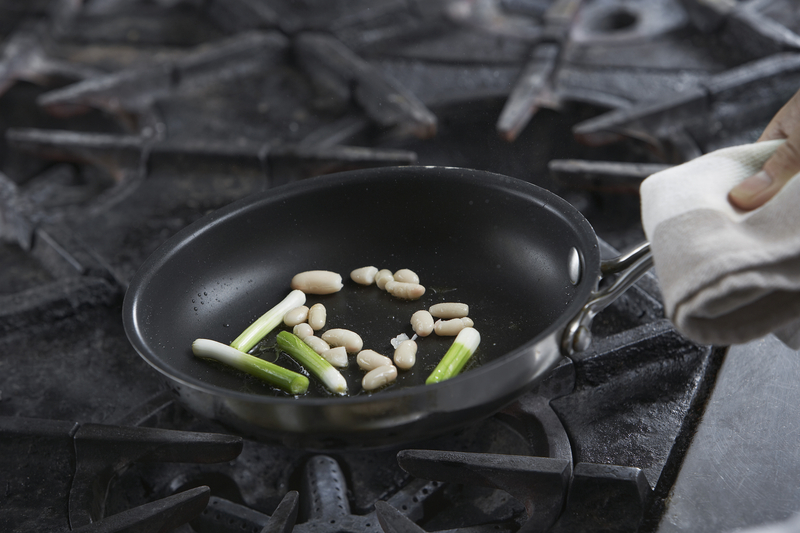 When it comes to selecting a durable pan, there are a variety of options available.
When it comes to selecting a durable pan, there are a variety of options available.
Each type of pan has its own unique characteristics that make it a suitable choice for different cooking needs.
Here are some of the most durable types of pans:
Cast Iron Pans
Cast iron pans are known for their durability and can last for generations if cared for properly.
They are made from iron that is heated and then poured into a mold to create the pan.
Cast iron pans are versatile and can be used on the stove, in the oven, and even on the grill.
They are also great for searing, frying, and baking. Cast iron pans require seasoning to prevent rust and maintain their non-stick surface.
 An example of a high rated cast iron pan is the Lodge pre seasoned skillet.
An example of a high rated cast iron pan is the Lodge pre seasoned skillet.
The Lodge Skillet is a versatile and durable kitchen tool that has earned its reputation as a timeless classic.
Known for its exceptional heat retention and even heating, this skillet is a favorite among home cooks and professional chefs alike.
One of the standout features of the Lodge cast iron skillet is its pre-seasoned surface.
Pre-seasoning involves treating the skillet with natural vegetable oil at the foundry, creating a protective layer that prevents rust and provides a smooth, non-stick cooking surface right out of the box.
Stainless Steel Pans
Stainless steel pans are also a durable option and are resistant to corrosion and scratches.
They are made from a combination of steel, chromium, and nickel.
Stainless steel pans are ideal for cooking acidic foods and are great for searing and sautéing.
They can be used on any type of stove, including induction.
Stainless steel pans are easy to clean and maintain, but they do not have a non-stick surface.
 An example of a premium stainless steel pan is the All-Clad D3 3-Ply Pan.
An example of a premium stainless steel pan is the All-Clad D3 3-Ply Pan.
The All-Clad Pan is a high-quality kitchen essential known for its exceptional performance and durability.
The “D3” in its name refers to its tri-ply construction, which consists of three layers of metal—stainless steel on the exterior and interior with an aluminum core in between.
This design combines the benefits of stainless steel’s durability and non-reactive properties with the superior heat conductivity of aluminum.
Carbon Steel Pans
Carbon steel pans are similar to cast iron pans in terms of durability and versatility.
They are made from a combination of iron and carbon and are great for searing, frying, and baking.
Carbon steel pans are also lightweight and heat up quickly.
They require seasoning to prevent rust and maintain their non-stick surface.
Carbon steel pans are not dishwasher safe and require hand washing.
 An example of a durable and highly rated carbon steel pan is the Matfer Bourgeat Black Carbon Steel Fry Pan.
An example of a durable and highly rated carbon steel pan is the Matfer Bourgeat Black Carbon Steel Fry Pan.
The Matfer Pan is a professional-grade cookware known for its excellent heat conductivity, durability, and versatility.
Crafted from black carbon steel, this pan is designed to deliver precise and even heating, making it a favorite among chefs for various culinary applications.
Anodized Aluminum Pans
Anodized aluminum pans are a durable and lightweight option.
They are made from aluminum that has been treated with an electrochemical process to create a hard, non-reactive surface.
Anodized aluminum pans are great for cooking acidic foods and are ideal for sautéing and frying.
They are also easy to clean and maintain.
Anodized aluminum pans are not dishwasher safe and require hand washing.
 The Calphalon Classic Hard-Anodized Nonstick Frying Pan is a popular and well-regarded piece of cookware known for its durability, versatility, and efficient cooking performance.
The Calphalon Classic Hard-Anodized Nonstick Frying Pan is a popular and well-regarded piece of cookware known for its durability, versatility, and efficient cooking performance.
Its durable construction, nonstick properties, and user-friendly design make it a popular choice among both amateur and professional chefs.
In summary, each type of durable pan has its own unique characteristics that make it a suitable choice for different cooking needs.
Cast iron, stainless steel, carbon steel, and anodized aluminum pans are all great options to consider when looking for a durable pan.
Comparing Pan Durability
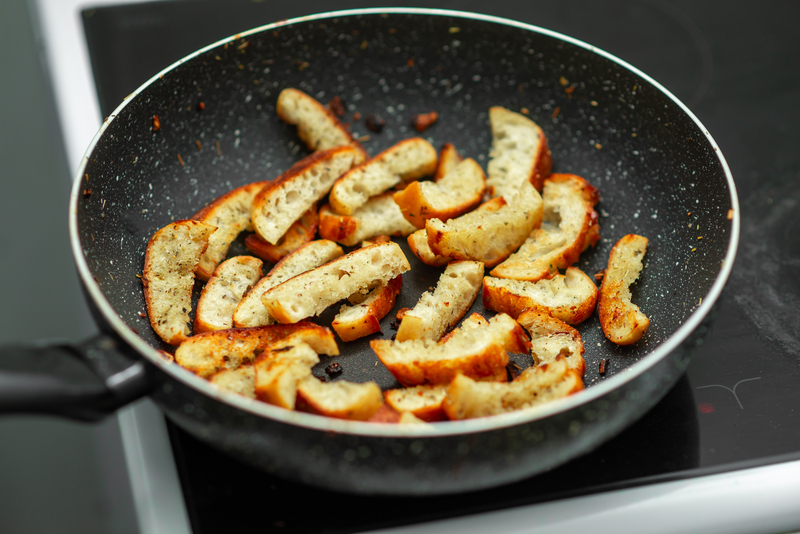
When it comes to choosing a durable pan, there are several factors to consider.
In this section, we will compare the durability of different types of pans based on their heat tolerance, scratch and dent resistance, and lifespan and longevity.
Heat Tolerance
Heat tolerance is an important factor to consider when choosing a durable pan.
Pans that can withstand high temperatures without warping or cracking are more likely to last longer.
Cast iron and stainless steel pans are known for their high heat tolerance, making them a popular choice among cooks.
However, non-stick pans are not as heat-resistant and can easily be damaged if exposed to high temperatures.
Scratch and Dent Resistance
Scratch and dent resistance are also important factors to consider when choosing a durable pan.
Pans that are resistant to scratches and dents are less likely to become damaged and will last longer.
Stainless steel and cast iron pans are known for their scratch and dent resistance, while non-stick pans are more prone to scratches and dents.
Lifespan and Longevity
The lifespan and longevity of a pan are crucial factors to consider when choosing a durable pan.
Pans that are well-made and durable can last for years, while cheaper pans may need to be replaced more frequently.
Cast iron and stainless steel pans are known for their longevity and can last for decades if properly cared for.
Non-stick pans, on the other hand, may need to be replaced more frequently as the non-stick coating wears off over time.
In conclusion, when it comes to choosing a durable pan, it is important to consider factors such as heat tolerance, scratch and dent resistance, and lifespan and longevity.
Cast iron and stainless steel pans are generally considered to be the most durable, while non-stick pans may not last as long. Ultimately, the choice of pan will depend on the specific needs and preferences of the cook.
Care and Maintenance
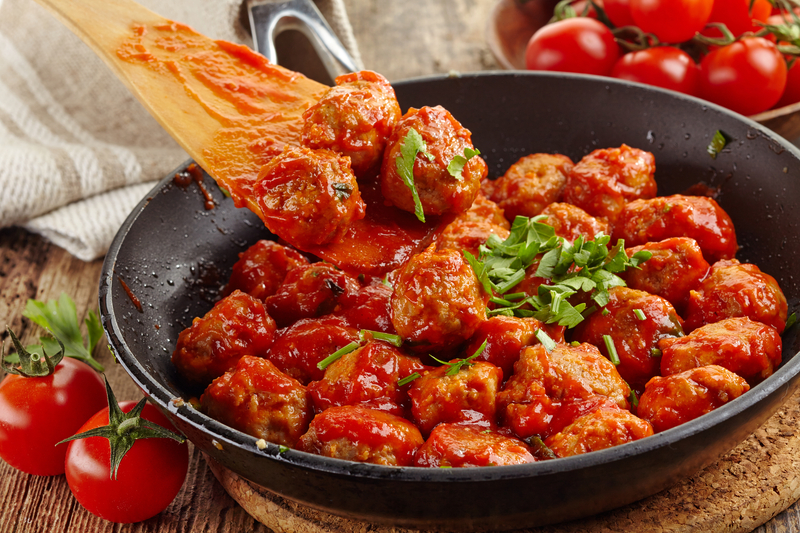
Cleaning Practices
To ensure the longevity of your pan, proper cleaning practices are crucial.
After each use, allow the pan to cool before cleaning.
Avoid using abrasive sponges or harsh cleaning chemicals as they can damage the pan’s surface.
Instead, use a soft sponge or cloth with warm water and mild soap to gently clean the pan.
For stubborn stains, baking soda mixed with water can be used as a natural cleaning solution.
Seasoning Procedures
Seasoning is the process of creating a non-stick surface on your pan by coating it with oil and heating it.
This helps prevent food from sticking to the pan and also protects it from rust and corrosion.
To season your pan, first, wash it with warm water and soap, then dry it completely.
Next, apply a thin layer of oil to the pan and heat it on low heat for about 10 minutes.
Repeat this process a few times to create a durable non-stick surface.
Storage and Handling
Proper storage and handling of your pan can also affect its durability.
Avoid stacking heavy pans on top of each other as this can cause scratches and damage to the surface.
Instead, store them separately in a dry and cool place.
When handling your pan, use oven mitts or pot holders to protect your hands from the heat.
Avoid using metal utensils as they can scratch the surface of the pan. Instead, use wooden or silicone utensils to prevent damage.
Brand and Manufacturer Impact
When it comes to durability, the brand and manufacturer of a pan can have a significant impact.
Some brands have a reputation for producing high-quality, long-lasting cookware, while others may not be as reliable.
Here are some factors to consider when evaluating the impact of brand and manufacturer on pan durability.
Warranty and Customer Service
A good warranty and customer service can be indicators of a manufacturer’s confidence in their product’s durability.
If a manufacturer offers a long warranty and has a reputation for excellent customer service, it can provide peace of mind for the buyer.
Some manufacturers even offer lifetime warranties on their pans, which can be a strong selling point for those looking for a durable pan.
Reputation and Reviews
The reputation of a brand can also be a factor in pan durability.
If a brand has a history of producing high-quality, long-lasting cookware, it’s more likely that their pans will be durable as well.
Checking reviews from other customers can also be helpful in determining the durability of a particular pan.
Look for reviews that mention the pan’s durability and how long it has lasted for the reviewer.
Overall, it’s important to do your research when it comes to the brand and manufacturer of a pan.
Look for brands with a good reputation, strong warranties, and positive customer reviews to increase the chances of finding a durable pan.
Environmental and Health Considerations

Material Safety
When it comes to the safety of the materials used in cookware, it is important to consider the potential health risks associated with certain types of pans.
Non-stick pans, for example, are coated with a substance called polytetrafluoroethylene (PTFE), which can release toxic fumes when overheated.
These fumes can cause flu-like symptoms and even pose a risk of cancer.
Cast iron and stainless steel pans, on the other hand, are generally considered safe and non-toxic.
Cast iron is made from iron, which is a naturally occurring mineral, and stainless steel is made from a combination of iron, chromium, and nickel.
However, some people may have allergies to nickel, so it is important to consider this when choosing a stainless steel pan.
Eco-Friendliness
In addition to material safety, it is also important to consider the environmental impact of the pans you choose.
Non-stick pans, for example, are often made with chemicals that can be harmful to the environment.
Additionally, these pans have a shorter lifespan than other types of pans and need to be replaced more frequently, which can contribute to waste.
Cast iron and stainless steel pans, on the other hand, are more environmentally friendly options.
Cast iron is made from natural materials and can last for generations with proper care.
Stainless steel is also durable and long-lasting, and can be recycled at the end of its lifespan.
Overall, when considering the environmental and health impact of different types of pans, cast iron and stainless steel are the most durable and safe options.
By choosing these types of pans, you can ensure that you are making a responsible choice for both your health and the environment.
Cost Versus Quality
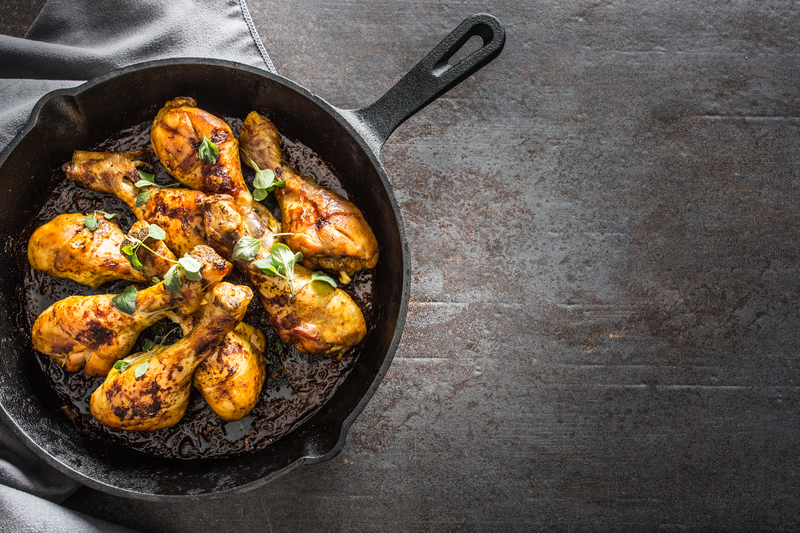
Price Range
When it comes to the cost of pans, there is a wide range of options available in the market.
The price of a pan depends on various factors such as the material used, the quality of the construction, and the brand name.
In general, pans made of high-quality and durable materials tend to be more expensive than their cheaper counterparts.
For example, a cast iron pan can cost anywhere from $20 to $200, depending on the size and brand.
On the other hand, a non-stick pan made of low-quality materials may cost as little as $10.
It is important to note that the price of a pan does not always reflect its quality.
A high price tag does not necessarily mean that a pan is more durable or better suited for your needs.
Similarly, a cheap pan may not always be a good investment in the long run.
Investment Value
Investing in a high-quality and durable pan can save you money in the long run.
While a high-quality pan may be more expensive upfront, it is likely to last longer and require less maintenance than a cheaper pan.
For example, a cast iron pan can last for decades if properly cared for, while a non-stick pan may need to be replaced every few years.
Investing in a cast iron pan may be a better option in the long run, as it is more durable and requires less frequent replacement.
When considering the investment value of a pan, it is important to take into account your personal needs and cooking habits.
If you cook frequently and rely heavily on your pans, investing in high-quality and durable pans may be a wise choice.
However, if you only cook occasionally, a cheaper pan may be a more practical option.
Ultimately, the decision of whether to invest in a high-quality and durable pan depends on your individual needs and budget. It is important to do your research and consider all factors before making a purchase.


